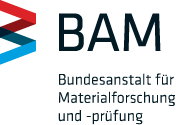
A look into the nanoworld: Prof. Dr Heinz Sturm at the electron microscope
Source: BAM/Thomas Köhler
Prof. Dr. Heinz Sturm heads BAM's Nanotribology and Nanostructuring Division. In this interview, the physical chemist discusses how his research in nanotechnology helps make cars and aircraft safer, and which challenges still remain.
Your research in the field of nanotechnology promises great opportunities for the development of new lightweight construction materials, which should both protect the environment and increase safety. What are you working on exactly?
We are researching how nanoparticles can make materials used for manufacturing plastic-based lightweight components in wing panels or car bodywork parts safer.
It is our aim to use nanoparticles to alter the material properties in such a way that, where possible, a crack in the material will not develop in the same shape in one direction but will be spatially dispersed. This will mean that during impact – for example, when the famous pigeon hits the aircraft's wing – the crack may become wider, but will not penetrate so deeply into the material. In this way the material will remain generally intact or any damage will be minimised.
What are the challenges in developing these nanomaterials?
The manufacture of carbon fibre plastics reinforced by nanoparticles is a multi-stage process. The difficult part is to not make the plastic too hard and therefore too brittle. If it is then it would split easily and form the cracks described. For this reason we are working on developing a binding material in which the plastic part does not crack so easily, but is nevertheless hard and stiff. Nanoparticles help us to do precisely this. They need to mix well with the plastic, which means the chemistry has to be right between their surface and the molecules of the plastic. We are also researching how to make the beams or panels thinner and lighter. That means less energy consumption, from the electric car through to aircraft. This can only be achieved by cooperating with other experts who are working on the producibility of binding materials or who evaluate their capabilities. That is why we work in a large research network supported by public funds.
Nanotechnology is often viewed critically because its effects on people and the environment have not been fully researched. What are you doing in your area of research to minimise risks?
Whether or not materials can become dangerous is primarily determined by their hardness and shape. If they have sharp ends, for example, they can penetrate cells and damage them. We are currently working on a project for the German Federal Institute for Occupational Safety and Health (BAuA), in which we want to discover the stiffness of such fibrous nanoparticles, which stick out a bit from the plastic following a break, for example. BAuA will derive regulations or behaviour guidelines for users from our results. This will include information about which material can be dangerous under which circumstances, and what should be taken into account during use and during recycling or disposal.
How do you see the future potential of these nano-lightweight construction materials?
We need these lightweight construction materials to further reduce our energy problems and our CO2 footprint. However, research into the optimisation of these substances using nanoparticles is still in its early stages. In the best case, the aim of our research is to construct nanomaterials in such a way that risks for people and the environment are minimised from the outset. That is not easy. It is not just a question of "faster, higher, further," but of creating a process that is sustainable. And that's what we're working on.


